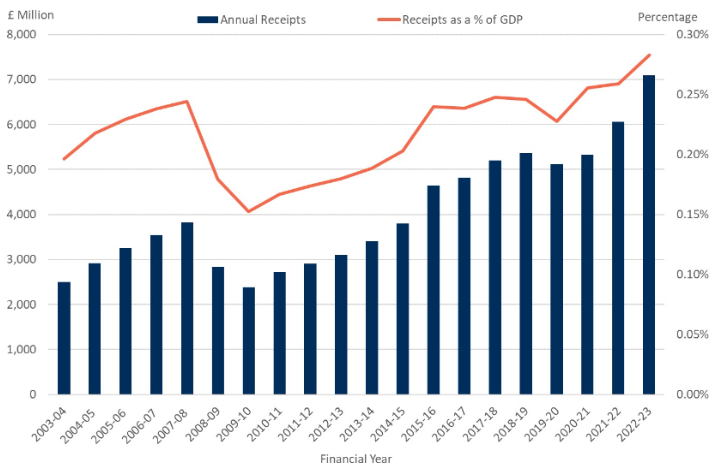Heading to university is an exciting time for new students. As a parent, you may feel proud of your child’s achievements, but it’s normal to feel apprehensive as they potentially move out and embrace independence for the first time. You might also worry about the financial burden of student loans. Read on to discover what you need to know.
The average student will graduate with £42,900 of student debt
Data from the House of Commons library suggests those starting university in 2023/24 will graduate with £42,900 of student debt on average. However, if your child is living away from home, their total student debt could be higher.
That might seem like a huge burden to start your working life with. However, the way student loans work mean repayments are manageable for most graduates and many won’t repay the full amount.
For 2023/24, universities can charge up to £9,250 for a year of tuition. As most courses last three years, students can expect to pay £27,750 in tuition fees. If your child is using a student loan to pay for their tuition, the money is usually paid directly to the university.
The remainder of student debt is made up of maintenance loans, which can be used to cover costs like accommodation, course books, and day-to-day expenses. Maintenance loans are paid into your child’s bank account in three instalments each year.
The maximum your child could receive through maintenance loans will depend on if they are living at home or moving out, and whether they’re studying in London.
Students starting university in 2023 will take out a new “plan 5” loan
The government has made changes to how student loans are repaid, and students going to university in autumn 2023 are among the first to be part of the new “plan 5” loans.
So, even if you’re aware of how student loans work, it may be worth reviewing the changes. Here are the key things you need to know.
- Graduates will only repay student loans when they earn more than £25,000 a year
One of the key things to remember if you’re worried about student debt is that your child wouldn’t need to make repayments if they struggle to find a job or earn a low income.
Plan 5 graduates won’t need to make repayments until they earn more than £25,000 a year. This threshold is frozen until 2027, after which it’s expected to increase in line with inflation.
Once your child’s income exceeds £25,000, they’d repay 9% of everything earned above the threshold. So, if their income was £35,000 a year, they’d need to make student loan repayments of £900 a year.
As a result, repayments are typically manageable and wouldn’t need to be made if your child lost their job or took time away from work.
- The loan is automatically wiped after 40 years
One of the biggest changes for plan 5 graduates is how long they could be making student loan repayments.
Older plans wiped out the debt after 30 years, but it’s now been extended to 40 years. More plan 5 graduates are expected to repay their loans in full or repay a larger proportion of the debt.
This could mean some graduates will be paying student loans when they retire if their income exceeds the repayment threshold.
- The interest rate on student loans is linked to inflation
A positive change for plan 5 graduates is that the interest rate added to outstanding debt will be set at the Retail Prices Index (RPI), which measures inflation. For some older plans, the interest rate added was RPI plus 3%.
- Student debt doesn’t go on their credit report
If you’re worried about how student loans could affect your child’s financial prospects, the good news is that they aren’t included on credit reports.
However, they may affect borrowing options if a lender assesses take-home pay, which could be lower due to repayments.
63% of students say they’re struggling with rent
While student loans may help cover university tuition and some living costs, many students are still struggling to make ends meet.
According to the 2023 National Student Accommodation Survey, 63% of students said they struggled to pay their rent. Worryingly, 2 in 5 students have considered dropping out of university due to rent or bills.
If you’re in a position to offer financial support, doing so could alleviate stress and help your child focus on their studies.
Whether your child is off to university this year or it’s something they may do in the future, making further education part of your financial plan could mean you feel more confident lending support.
If your child is already at university, you could make regular transfers to help with living costs part of your budget. Or if university is still a few years away, setting up a nest egg for your child could provide them with more financial security.
If you’d like to update your financial plan to consider university costs or other ways you’d like to support your family, please contact us.
Please note:
This blog is for general information only and does not constitute advice. The information is aimed at retail clients only.













